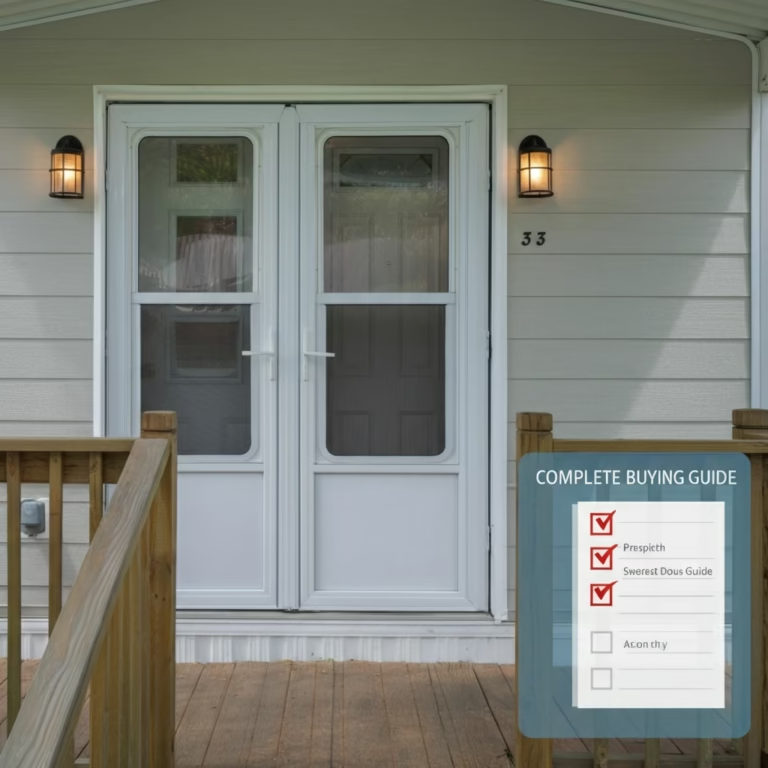2-2-4-6 Aluminum Mobile Home Feeder Cable: A Complete Guide
Introduction
Proper electrical wiring is crucial for the safety and functionality of mobile homes. Installing reliable, durable, and compliant cables ensures that homeowners can enjoy a steady electrical supply while minimizing hazards like short circuits or power losses. Among the various wiring solutions available, the 2-2-4-6 aluminum mobile home feeder cable is a popular choice due to its versatility, affordability, and capability to handle the specific demands of mobile home setups.
Whether you’re upgrading an existing electrical system or embarking on a fresh installation, understanding the ins and outs of the 2-2-4-6 aluminum mobile home feeder cable is vital. This guide explores its features, pricing, comparisons with other cables, and installation methods to help you make an informed choice.
What is a 2-2-4-6 Aluminum Mobile Home Feeder Cable?
A 2-2-4-6 aluminum mobile home feeder cable is a type of electrical wiring commonly used to connect manufactured or mobile homes to external electrical power sources. The cable comprises four aluminum alloy conductors, with two 2 AWG wires for hot connections, one 4 AWG neutral wire, and one 6 AWG ground wire. Its design ensures proper power distribution, making it suited for residential applications, specifically mobile homes.
Key Features:
- Aluminum Alloy Conductors: Lightweight yet highly conductive, aluminum allows easier installation and lower material costs compared to copper.
- 400 AMP Capacity: The cable supports large loads, accommodating the electrical needs of most mobile homes.
- Durable Insulation: Rated for 600 volts, it is resistant to heat, weather, and wear, ensuring longevity.
- Flexibility: Works well in both overhead and underground installations.
Mobile homes often require feeder cables like the 2-2-4-6 to safely manage power input from utility poles or generators. Its composition makes it a reliable option for those prioritizing cost-effectiveness without compromising safety.
Key Features and Benefits
1. Durability
The aluminum conductors in the 2-2-4-6 cable are insulated with high-quality thermoplastic material designed to withstand environmental factors. Whether installed underground or exposed to the elements, this cable resists corrosion and damage.
2. Cost-Effectiveness
Compared to copper cables, aluminum feeder cables are more affordable, making them an excellent choice for homeowners on a budget. The 2-2-4-6 cable balances affordability with excellent performance.
3. Compliance with Safety Standards
The cable meets key electrical safety standards, providing assurance that its use in residential applications is up to code. Its 600V rating makes it safe for high-load situations typically found in mobile homes.
4. Ease of Installation
Lightweight and flexible, the 2-2-4-6 cable is easier to install than its copper counterparts. Additionally, since it accommodates underground direct burial, installation becomes even more convenient for off-grid properties or rural locations.
Pricing Overview
The cost of a 2-2-4-6 aluminum mobile home feeder cable varies based on factors like brand, length, and regional availability. For instance, a common length—50 ft—is frequently in demand for mobile home setups. Below is a table presenting pricing estimates for different lengths and types of feeder cables available in the market.
| Cable Type | Length | Price |
|---|---|---|
| 2-2-4-6 Aluminum MH Feeder Cable | 50 ft | $140 – $180 |
| 2-2-4-6 Aluminum MH Feeder Cable | 100 ft | $260 – $300 |
| 2-2-2-4 MHF | 50 ft | $120 – $150 |
| 4-4-4-6 Aluminum Wire | 50 ft | $85 – $110 |
| 2/0-2/0-1-4 | 50 ft | $250 – $300 |
| 2-2-2-4 Dyke Quadruplex Aluminum | 50 ft | $170 – $210 |
| Underground Feeder UF Cable | 50 ft | $80 – $120 |
| 2/0-2/0-2/0-1 Black Stranded AL MHF | 50 ft | $300 – $350 |
| 2-2-4-6 Aluminum MH Feeder Cable | 150 ft | $400 – $450 |
| 2-2-4-6 Aluminum MH Feeder Cable | 200 ft | $500 – $550 |
Understanding Pricing Trends
Several factors influence the 2-2-4-6 aluminum mobile home feeder cable price:
- Material Costs: Aluminum is generally cheaper than copper, contributing to its lower overall price.
- Length: Longer cables naturally cost more, but purchasing in bulk often results in discounted rates.
- Specifications: Specialized cables like 2-2-2-4 Dyke Quadruplex aluminum conductor underground direct burial 600V URD or 2/0-2/0-2/0-1 Black stranded al mhf USE-2 Cable come at a premium due to enhanced capabilities.
For homeowners, the pricing sweet spot often lies in lengths around 50 ft to 100 ft, as these typically suffice for mobile home installations.
Comparison with Similar Cables
Choosing the right cable involves understanding its alternatives. Here’s how the 2-2-4-6 aluminum cable compares to similar options:
- 2-2-2-4 MHF: This cable is similar in function to the 2-2-4-6 feeder but lacks a 6 AWG ground wire, potentially requiring additional installation components for grounding.
- 4-4-4-6 Aluminum Wire: Thinner gauge wires make it suitable for smaller loads, but it is less effective for high-power applications.
- 2/0-2/0-1-4: Larger and more powerful than 2-2-4-6, this cable supports industrial or large residential applications. However, it’s more expensive and less practical for typical mobile homes.
Consider your power demands when selecting the cable type, with 2-2-4-6 aluminum feeder cable being the most balanced option for standard applications.
Applications and Installation
One of the standout features of the 2-2-4-6 aluminum feeder cable is its versatility. It excels in both overhead and underground setups, offering ample flexibility for various installation scenarios.
Underground Installations
When buried underground, the cable must be capable of direct burial or installed using conduits. Options like the 2-2-2-4 Dyke Quadruplex aluminum conductor underground direct burial 600V URD are desirable for this purpose due to their robust insulation.
Connection to Utility Poles
The cable is used extensively to connect individual mobile homes to external power sources, such as utility poles or nearby generators.
Compliance with UF Standards
The Underground Feeder UF cable also serves as an alternative for direct burial setups, although it tends to be more rigid and often preferred for smaller residential applications.
Tips for Choosing the Right Cable
Selecting an aluminum mobile home feeder cable depends on the specific requirements of your installation:
- Assess Power Needs: Evaluate the total ampacity requirements of your home to ensure the cable can handle your electrical load.
- Length Considerations: Purchase cables slightly longer than needed to accommodate routing and connection points.
- Verify Compliance: Ensure the cable meets safety standards like the 600V capacity to avoid failing inspections.
- Confirm Suitability for Application: For underground installations, prioritize direct burial-rated cables like the 2-2-4-6 or Dyke Quadruplex options.
Conclusion
The 2-2-4-6 aluminum mobile home feeder cable is a dependable choice for mobile home electrical systems. It combines durability, cost-effectiveness, and compliance, making it well-suited for a range of applications. By understanding its features and comparing it to alternatives such as 2-2-2-4 MHF or 4-4-4-6 aluminum wire, homeowners can make an informed decision that best fits their needs.
Whether you’re wiring a new mobile home or upgrading an existing system, make sure to explore the tools and options available to get the best value for your investment.






